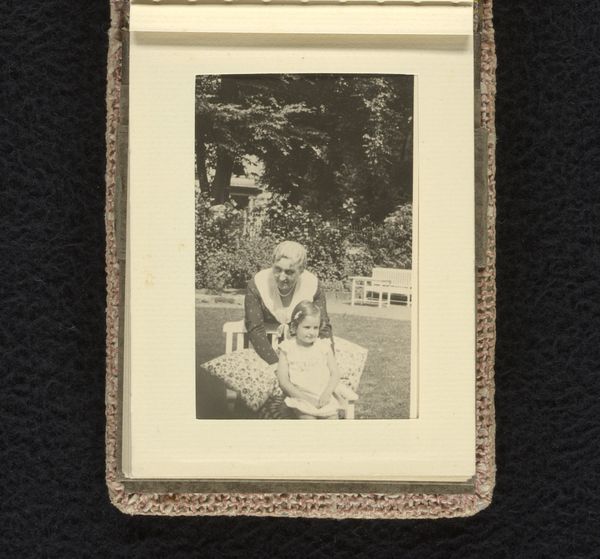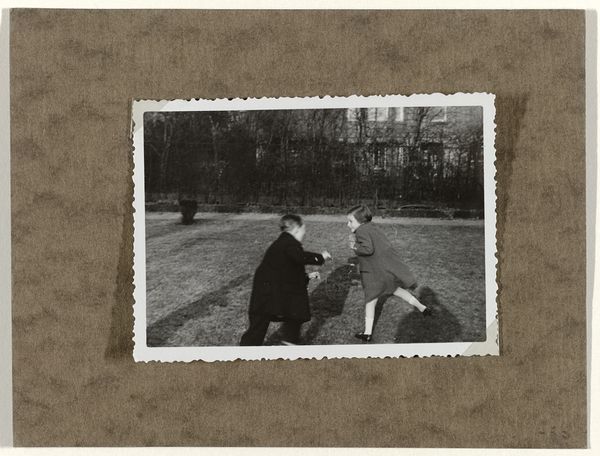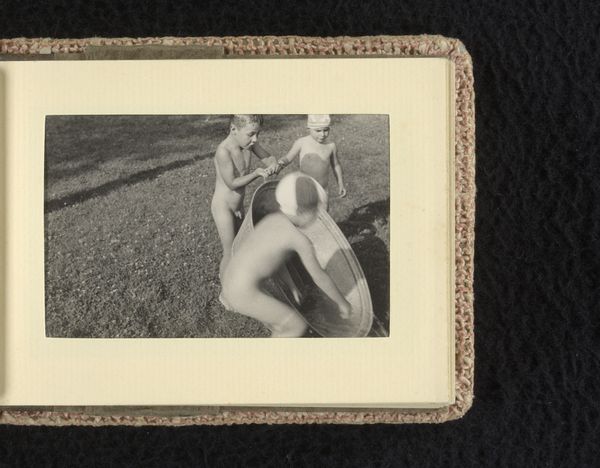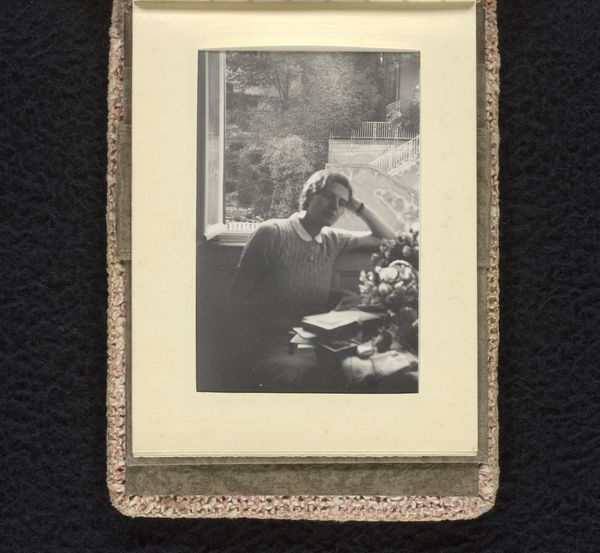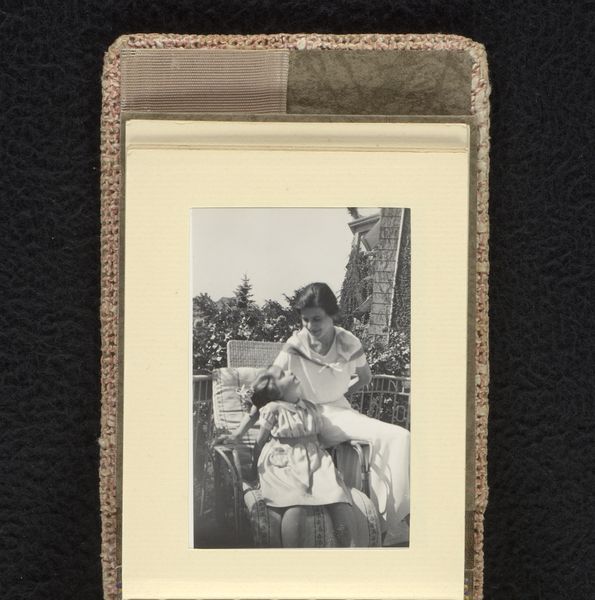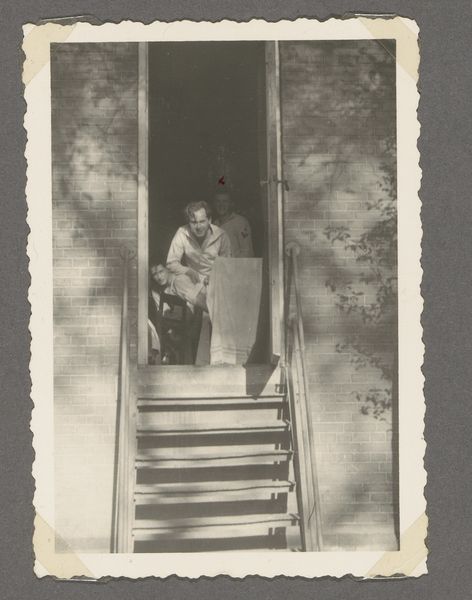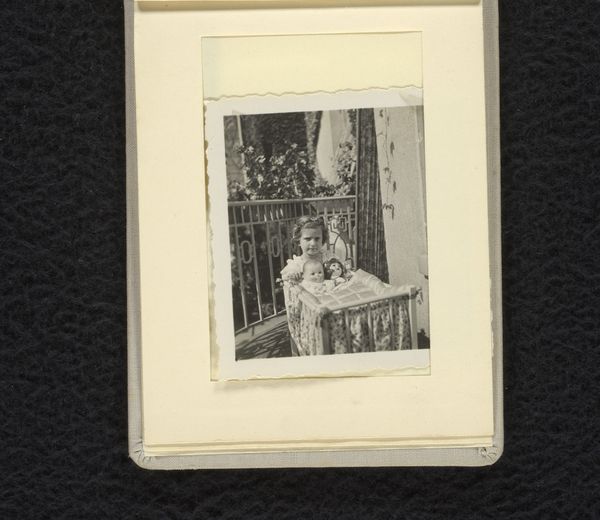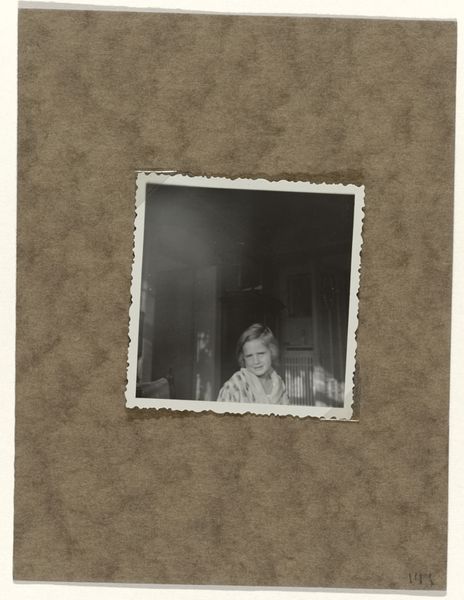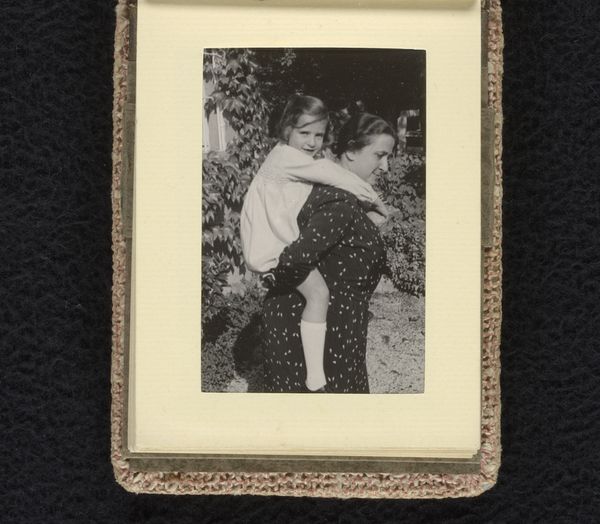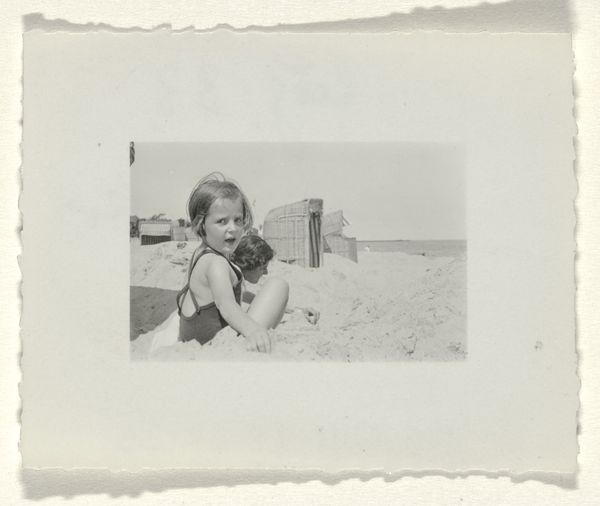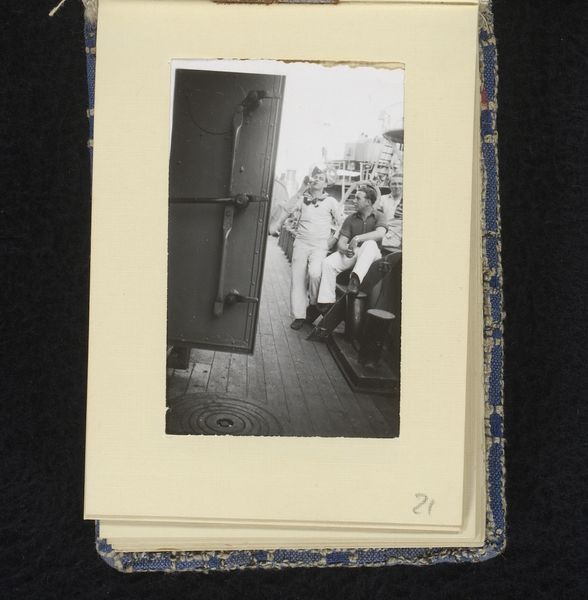
photography, gelatin-silver-print
#
portrait
#
photo of handprinted image
#
still-life-photography
#
photo restoration
#
photography
#
gelatin-silver-print
#
genre-painting
Dimensions: height 45 mm, width 60 mm
Copyright: Rijks Museum: Open Domain
Curator: There's a poignant intimacy to this photograph, “Isabel Wachenheimer en Hans in badtuil in augustus 1933, Hamburg," likely taken sometime between 1933 and 1938. It's a gelatin silver print showing two young children in what looks like a washtub outside on a lawn. It's small, quiet, evocative. Editor: I agree. It is quite intimate and sweet at first glance. The shadows create this looming presence that somehow hints at innocence and potential threats looming in the distance at the same time. Curator: Given the location and time period, the rise of Nazism casts a long shadow indeed. Isabel Wachenheimer, as a Jewish name, brings immediate historical context into play. The photograph becomes not just a charming snapshot, but a document pregnant with unspoken anxieties and vulnerabilities. What might seem a commonplace scene speaks volumes about a rapidly changing socio-political climate. Editor: Exactly. We need to also think about the role images play in both personal and public narratives. Photography, during this era, served as a way for families to document their lives but also was appropriated by political powers for propaganda and surveillance. How does knowing the subjects may have been persecuted impact how we perceive the everyday joys on display in the image? The use of public bathing for children also invites ideas of forced assimilation in some respects, like "washing away" one's cultural and ethnic identity to adhere to social norms, especially given the subject's name. Curator: A powerful point about the duality of the image and forced assimilation. On one hand, there's the tenderness captured—two young children innocently enjoying a summer afternoon. Yet, the tub acts as a metaphor, representing not only cleansing but a precarious confinement in an increasingly hostile environment. It’s a poignant paradox – a family seeking normalcy amidst rising fascism. The details we can’t know amplify the image's inherent emotional impact, like, who is casting that long shadow? A parent? A photographer? A harbinger? Editor: Ultimately, it seems like we’re left with an intimate visual that encapsulates immense global implications, all from such an uncomplicated image, it is fascinating. Curator: It truly is. A seemingly simple photograph imbued with history's weight.
Comments
No comments
Be the first to comment and join the conversation on the ultimate creative platform.
